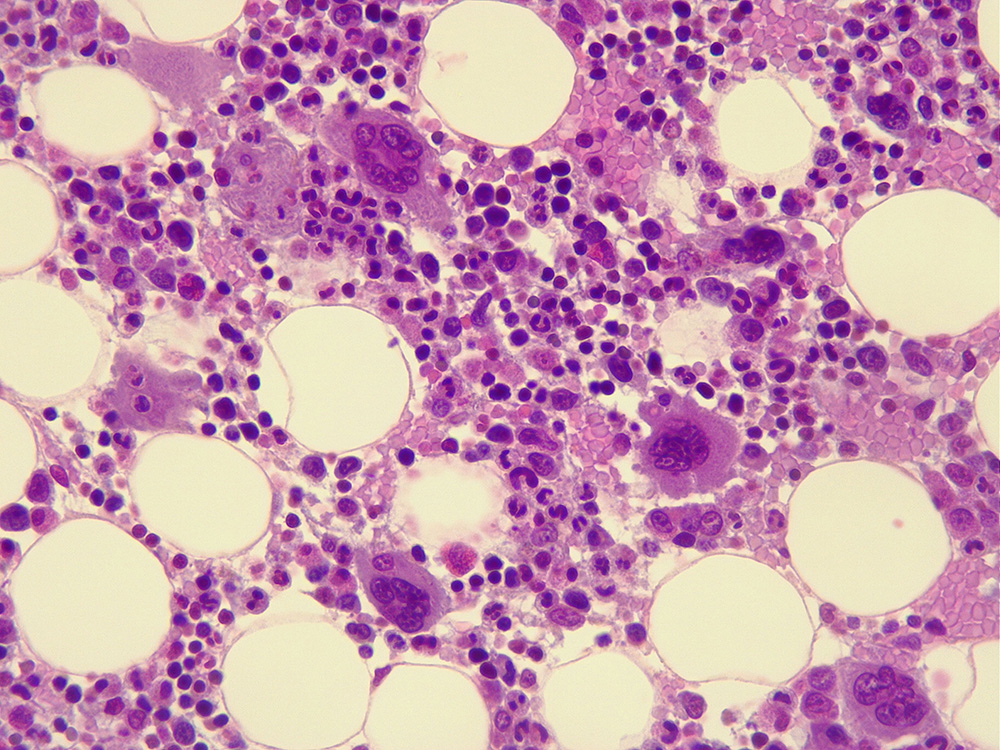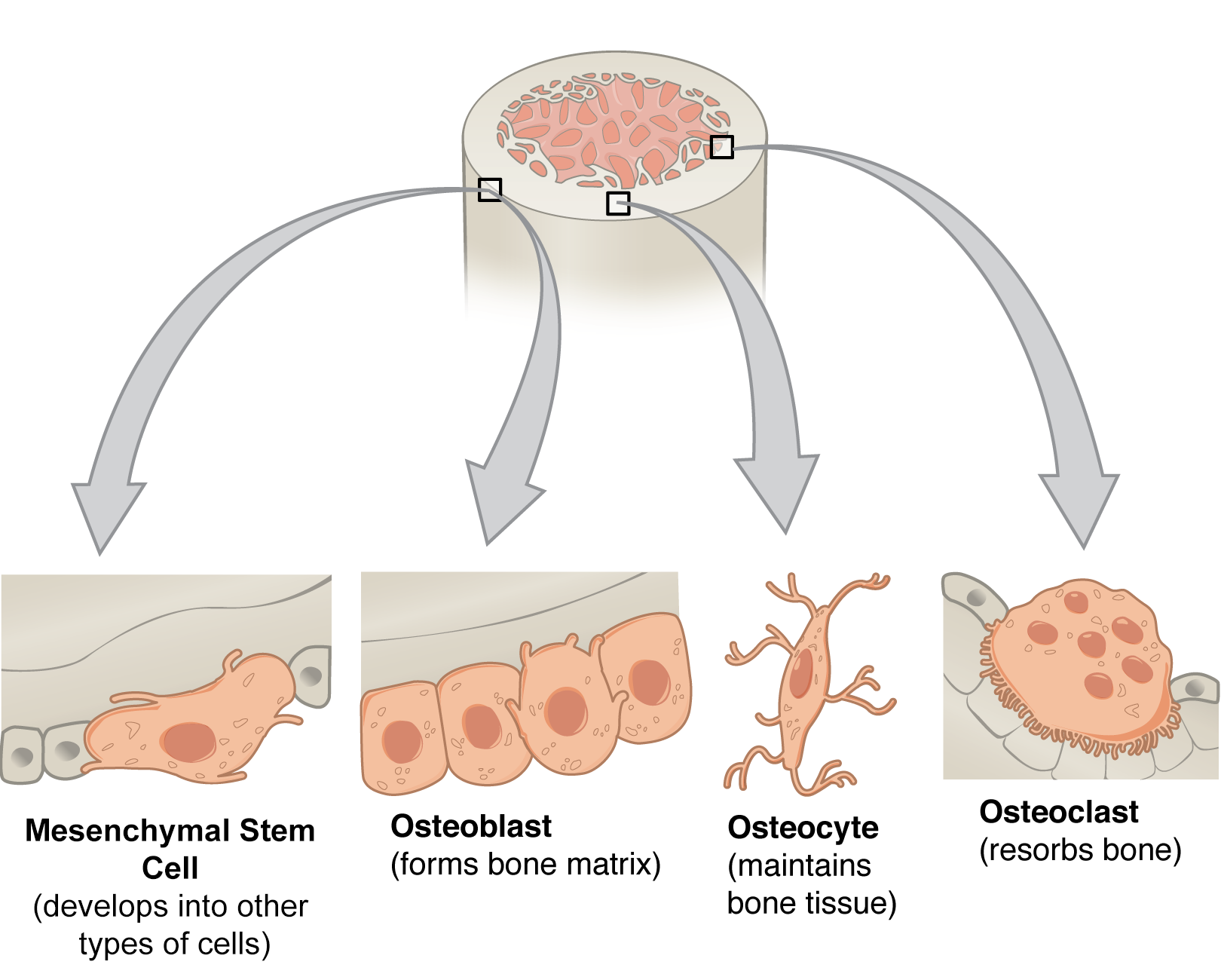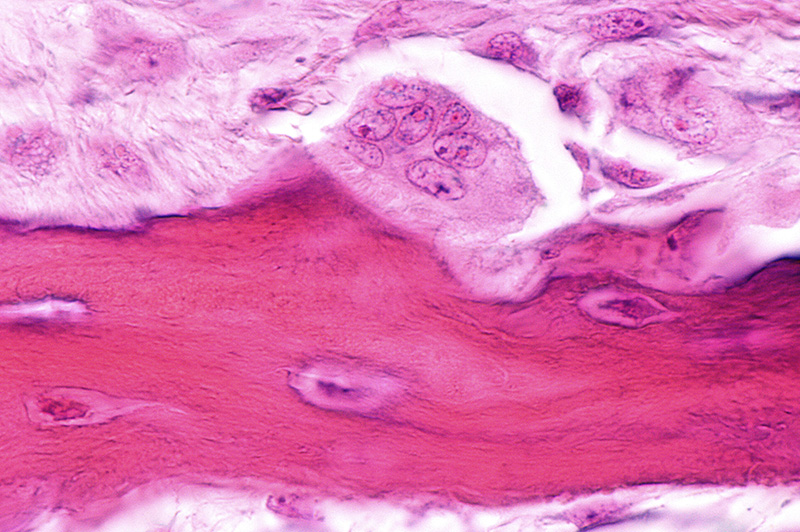Bone Composition: Part 1 – Bone Cells

Unique Properties of Bone
Bone is a fascinating material that provides a vital mechanical and biological function in the musculoskeletal system. Its unique properties have inspired material scientists to use bone’s composition and structure as a template for designing a variety of advanced materials in both medical and non-medical fields. Bone composition is particularly advantageous due to the presence of different materials in the bone structure. The three primary components of bone composition are:
- Bone cells
- Bone matrix – organic component (proteins, lipids)
- Bone matrix – inorganic component (bone mineral)
Due to these components, bone is a true composite material that combines advantages of multiple materials to create something better than the individual parts.
One unique property is that bone is a living structure capable of self-repairing. In the case of a broken bone, once the injury is mechanically stabilized with a cast, new bone will regenerate across the fracture and will eventually remodel into a fully healthy bone. Bone can also remodel itself on its own without treatment to fix micro-defects before they fail and will also remodel throughout a person’s life in response to changing biomechanical loads.
These seemingly miraculous properties are all due to the cellular component of bone composition.
Bone Cells
Bone is a living tissue that has a cellular component. Although bone cells compose less than 2% of bone mass, they are crucial for bone formation and remodeling. The four principal cells for musculoskeletal function are:
- Osteoblasts
- Osteoclasts
- Osteocytes
- Mesenchymal stem cells
These cells work together to build and maintain bone in the body.
Osteoblasts and osteoclasts: These bone cells are the workhorses. Osteoblasts are relatively large cells which are most often found in clusters in regions where bone is actively forming and mineralizing. In the case of a broken bone, the osteoblasts will initiate bone formation at the fracture to bridge the gaps and mechanically stabilize the site. This commonly results in a fracture callous, meaning that excess bone is formed to help mechanically stabilize the site.

Once the fracture is fused, it is the job of osteoclasts to resorb the excess bone and remodel the newly formed “woven” bone into a more organized, structural form (i.e., mature bone) that is identical to the surrounding bone composition.
Osteocytes: During this healing process, the osteoblasts secrete collagen and mineral, and eventually become entrapped in their own bone matrix. Once this occurs, they become dormant and are then referred to as osteocytes. These are the primary cells of mature bone and the most common type of bone cells. Interestingly, osteocytes can sense macrostrains and can become activated (turning back into an osteoblast) in response to stress or a fracture.
In addition to fracture repairs, osteoclasts and osteoblasts also work in concert to remodel and repair bone throughout life due to the day-to-day wear and tear of the skeleton.
Mesenchymal stem cells: This type of stem cells also contributes to the bone formation process in its own unique way. These are undifferentiated, precursor cells that are capable of turning into a variety of specialized cells that form musculoskeletal tissue, including:
- Bone (osteoblasts)
- Cartilage (chondrocytes)
- Soft tissue (fibroblasts)
- Blood vessels (endothelial cells)
In bone, mesenchymal stem cells reside primarily in the bone marrow, located in the center of most bones. Once a healing process is initiated, signaling proteins are released from local inflammatory cells to recruit mesenchymal stem cells from the bone marrow. The stem cells migrate to the healing site and differentiate into osteoblasts to help with the new bone formation process.
With a variety of cells involved in the healing process, bone is able to repair and remodel itself in response to injury or as part of the body’s normal function. These cells also serve as the factories that produce bone matrix and mineral and give bone its mechanical properties.
Head to Part 2 of the Bone Composition series to learn more about the organic and inorganic components of bone matrix.
Why Might Your Natural Bone Need Help from a Bone Graft?
Bone composition is very complex and results in a dynamic tissue that can repair and maintain itself throughout life, many times without any medical treatment or with minor treatment (such as using a cast to help stabilize a fracture). However, there are limitations to how far bone can grow on its own. When a severe bone fracture occurs that results in a large gap forming in the bone, surgery may be required to repair the injury and help the bone heal properly.
Additionally, there are bone defects that are surgically created due to the removal of a degenerated joint (e.g., arthritic joints in the foot and ankle, and degenerated discs in the spine). In these surgical applications, a bone graft must be used to help the regenerating bone grow across the large gap. In general, bone graft products, including man-made materials that were designed with properties similar to those of a natural human bone, may be utilized during surgery to fill voids in the bone.
Given the complexity and intricacy of bone composition, the ideal bone graft material should possess properties similar to the properties of a natural human bone. This includes chemical composition, architecture, or ideally both. Surgeons have a variety of options to choose from, and many surgeons today are opting for advanced synthetic materials that have been engineered to be similar to bone and thus optimal for bone healing.
Image sources:
- File is licensed under the CC Attribution – ShareAlike 4.0 International License. Text alternations were made to the original image. Original image available at: https://open.oregonstate.education/aandp/chapter/6-3-bone-structure/#fig-ch06_03_05
As a recognized leader in advanced bone graft technologies, Biogennix is committed to bringing high-quality educational content to our field. This blog will cover technical topics ranging from basic bone graft science to advanced osteobiologic principles. We’ll also discuss market trends and industry challenges. We thank you for reading and invite you to learn more about us here.


